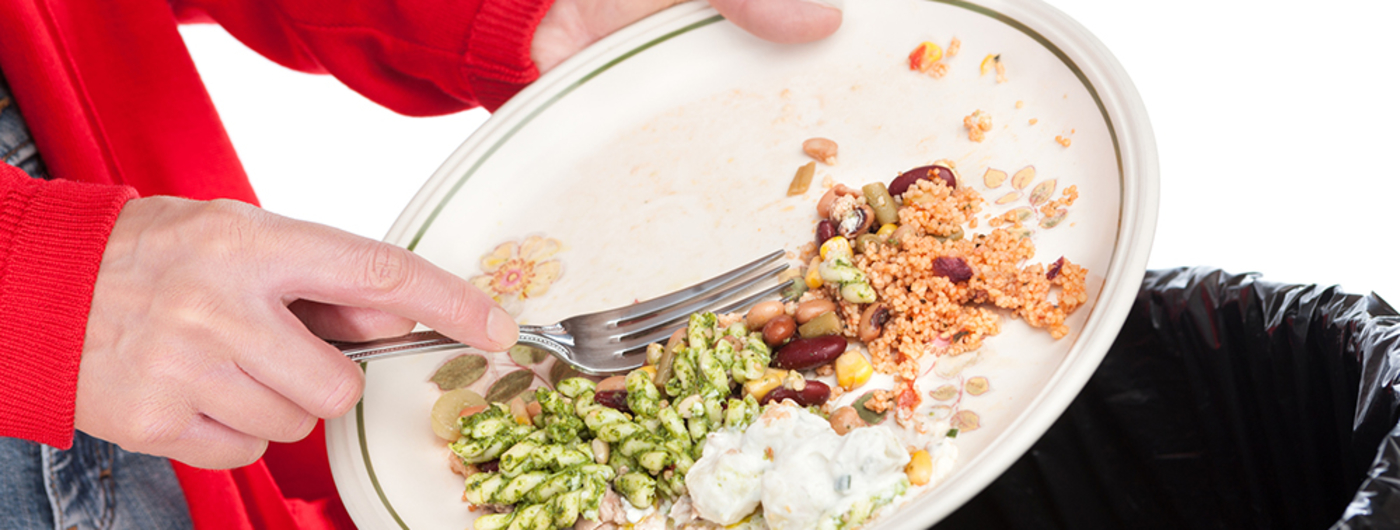English | español
Would you like to save money on your food bill? Protect natural resources? Improve access to food? You can help meet all three goals by reducing food waste in your home.
Food waste is a big problem. Did you know that 90 billion pounds of edible food goes uneaten each year in the United States? That’s the weight of 123 Empire State Buildings! And experts say this costs most people about $370 a year.
The amount of food waste is a growing concern. Wasted food items make up the single largest component going to landfills, but many foods tossed out are still safe to eat. Wholesome foods are tossed into landfills instead of feeding people in need. What’s more, producing, processing, transporting, preparing, storing, and disposing of discarded food uses resources such as land, water, labor, and energy that could go to other purposes.
Fortunately, organizations are making system changes to reduce food waste. But there are things you can do to cut food waste at home, too.
Plan and save food (and money)
Plan a weekly menu and make a grocery list with the ingredients you’ll need. Begin by looking in your refrigerator. Are there any foods or leftovers that your family should eat before they spoil? Put recipes on your weekly menu that feature your leftover foods. You’ll avoid throwing out those leftovers — and get the most for what you paid for them.
Be a smart shopper
Next you will want to make a shopping list. Look through grocery ads to find which foods are on sale. Now that you’ve developed your grocery list, stick to it so you don’t buy any food you won’t use. You can also be a smart shopper to prevent food waste. For example, let’s say kiwi are on sale 5 for $1.00. Your initial thought is to buy 5. But then you notice the kiwi are already ripe and you remember you have other fresh fruit in your refrigerator that your family needs to eat this week. You choose to buy 2 kiwi rather than 5 — and throwing out 3 because they spoiled before you could eat them.
Understand food product dating
The dates on food packages can be confusing. Here are two key things to know:
- A “sell-by” date tells the store how long to display the product for sale. You should buy the product before the date expires,
- A “best if used by (or before)” date is recommended for best flavor or quality.
Many people throw out products after the “best if used by” date expires, thinking they’re not safe to eat any more. But that isn’t necessarily so. Assuming you have stored foods properly and the “use by” date occurred a relatively short time ago, you can still eat those foods. Learn more about food product dating and safe storage of foods in the USDA Food Safety and Inspection Service's Food Product Dating fact sheet.
Get organized
Foods are less likely to go bad when you eat older items first. Keep your pantry and refrigerator clean and organized, with older items in front and newer ones in back. Label leftovers with content and dates so they can be used within the next few days.
Give leftovers new life
Give new life to leftover foods that are no longer at peak quality by using them in recipes that hide their problems. For example, add raw slightly limp broccoli to a salad, or blend overripe fruit into a low-fat smoothie. Also remember to freeze fresh fruits you don’t consume right away so they don’t lose their luster in the first place.
Try composting
Instead of throwing out food scraps, create a compost bin. Don’t have a yard? Your city may help you find composting or recycling options that are right for you.
Make it a goal to reduce food waste!
U.S. Department of Agriculture. (2015). Let’s talk trash.
U.S. Department of Agriculture. (2013). Food Product Dating.
Reviewed in 2018


